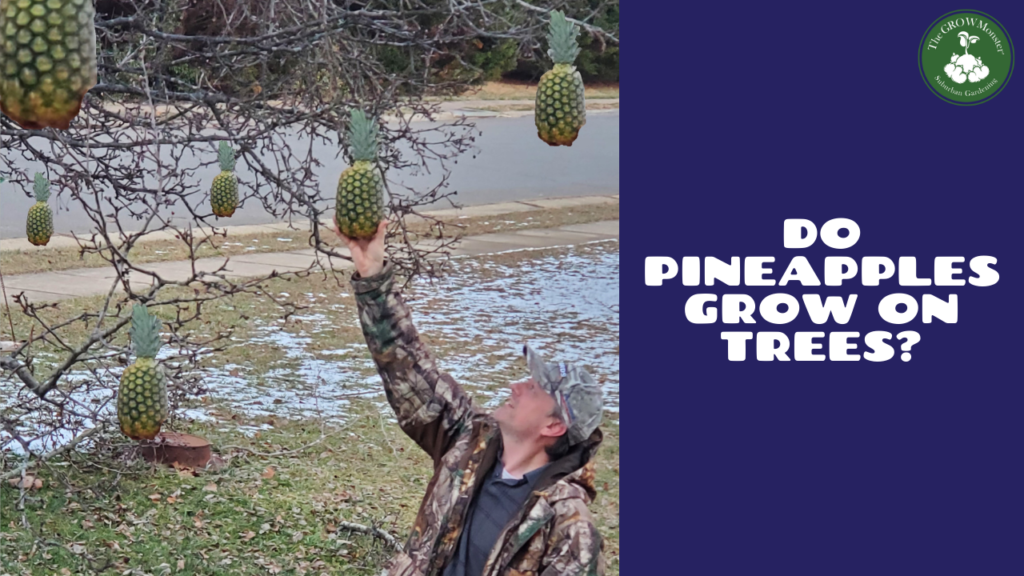The Pineapple is one of The Grow Monster‘s favorite fruits to eat. From being dipped in chocolate fondue dessert, to being used in a delectable marshmallow Ambrosia salad, the Pineapple truly is a wonderful fruit to have on the menu. With our love for Pineapple, The Grow Monster did research what it would take to grow a Pineapple tree in it’s suburban garden along with addressing some additional fun Pineapple questions in this post. However, let’s just get to the point and answer the initial question:
Do Pineapples Grow on Trees? Pineapples are a sweet tropical fruit that have the resemblance of a large pine cone, however they do not grow on a tree, but from a very spikey-leafed bush that grows on the ground.
Why People Ask Do Pineapples Grow on Trees?
It is how society has been conditioned. We’ve been conditioned from childhood to associate a very common fruit -the ‘apple’ – with the thing that apples grow on which is the ‘tree’. With stories such as Johnny Appleseed who went across the country as an American pioneer planting ‘apple trees’ as he went, or how a young Isaac Newton discovered gravity after being hit over the head by a falling apple from an ‘apple tree’ – we are naturally conditioned to think that anything ‘apple’ must surely come from a tree. Therefore, it is easy for people to think that Pineapples grow on trees.
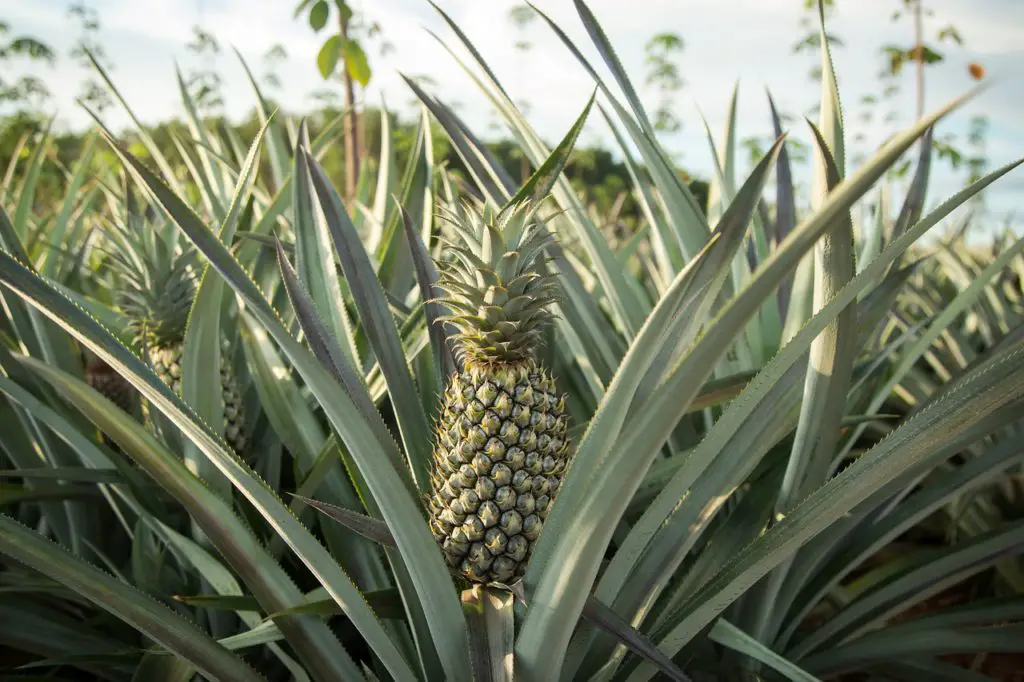
Who Discovered the Pineapple?
Western culture was first introduced to Pineapple when it was first discovered on the island of Guadeloupe in the year 1493 by none other than Christopher Columbus. Because of the pine cone resemblance, the Spaniards named this fruit a “piña” as in the popular cocktail “piña colada” (a tasty blend of rum, Coconut cream and Pineapple juice). The Pineapple has origins in the Brazilian Amazon rainforests where it was harvested by the indigenous groups of both South and Central America. They say that the Tupi (Tupinamba people) had worshipped the Pineapple as far back as 3000 years ago when they settled in the area making alcohol and medications from the fruit.
Was Pineapple Once a Status Symbol?
By the 16the century, Pineapples in Europe quickly became a symbol of status and wealth and were being harvested and sent back regularly from the Americas. Because the fruit was perishable and didn’t always make the journey, the pineapple truly became a rare commodity to have. Pineapples were highly valued and literally commanded thousands in today’s dollars. Pineapples were so highly valued that artists would build them into their sculptures, paintings, and architecture. The next time you visit a historical museum or visit an old Victorian home, look for anything that resembles a Pineapple in the artwork and architectural design.
In early revolution-era America, southern plantations (including Washington’s Mount Vernon) would grow the pineapple as a symbol of their independence and to spite the British crown.
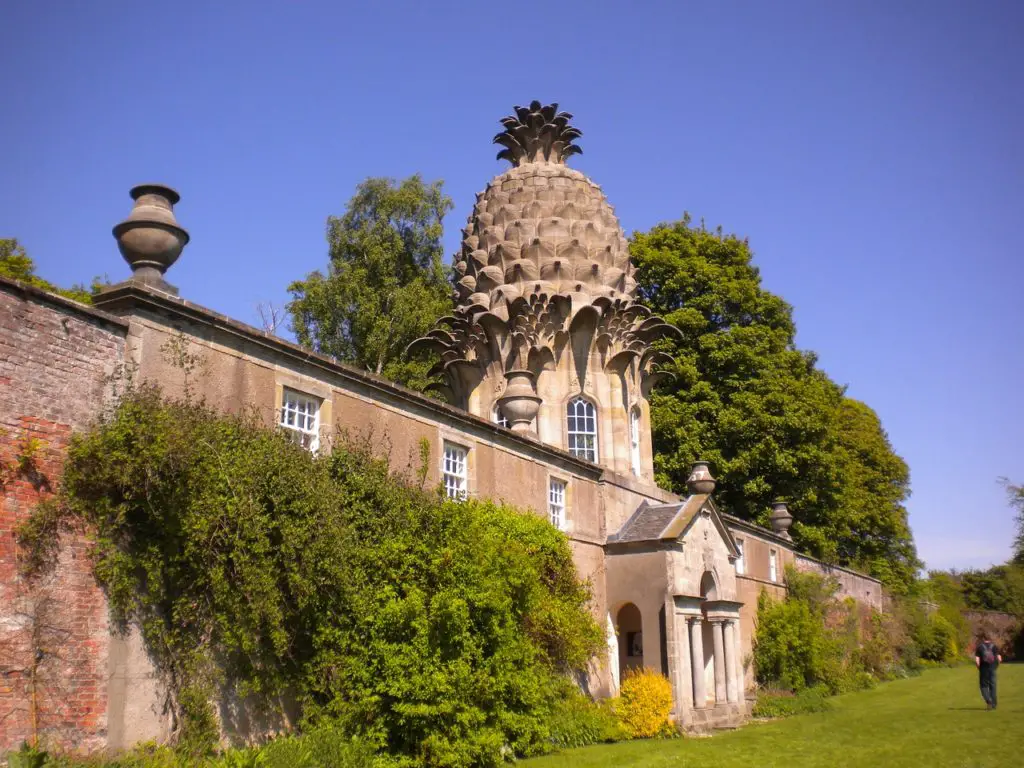
Today, the pineapple is no longer considered a fruit reserved only for the wealthy, but a fruit to be enjoyed and shared by all.
What are Pineapples?
The scientific name for pineapple is Ananas Comosus derived from the indigenous Tupinamba language where Ananas means “pine” and Comosus means “tufted”. Pineapples are a sweet, tasty tropical fruit. However, Pineapple is not just one fruit but a collection of berries that have fused together into a “tuft” known as a “collective fruit” or “multiple fruit”. Pineapples are a species of succulents in the Bromeliad family.
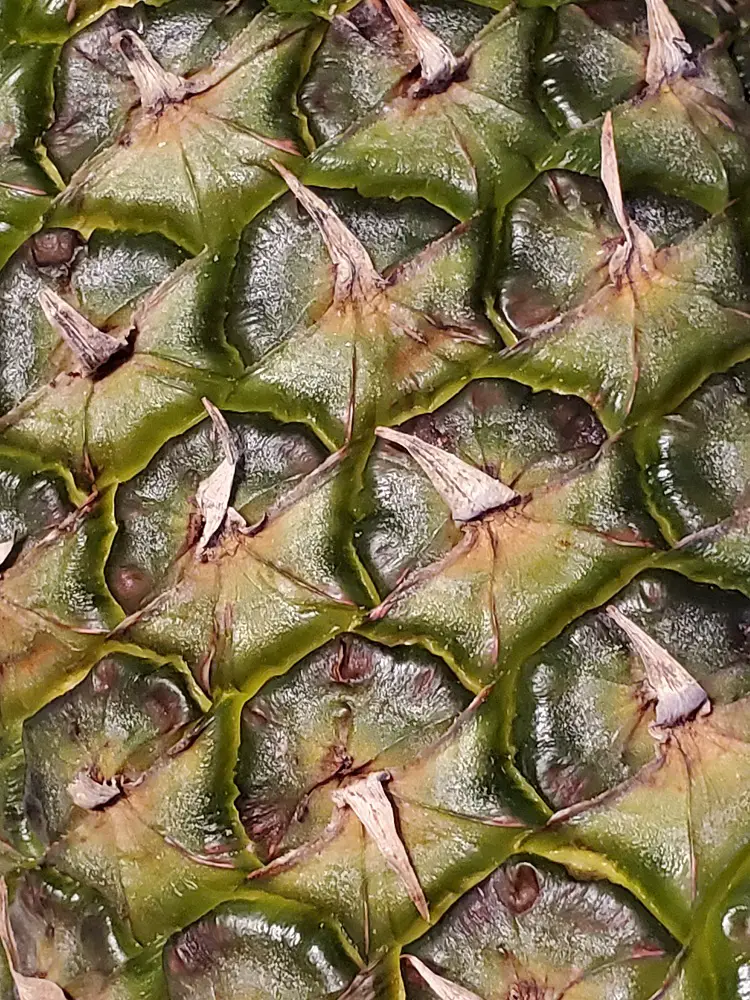
Are Pineapples Native to Hawaii?
Pineapples are not native to Hawaii. Because we know that many of the Pineapples we consume today come from Hawaii, we immediately think they must have been native to Hawaii to begin with. When did the Pineapple actually arrive to Hawaii? It is not entirely clear, but could have been as early as the 1500s when a ship had wrecked with Pineapple washing up on the shores and growing wildly on the island.
Although the Pineapple began in the Brazilian Amazon rainforests of South America, with Hawaii’s fertile volcanic soils and warm tropical climate it didn’t take long before Hawaii was determined to be a natural place to start an industry for Pineapple. Beginning around the 1880’s in conjunction with the advent of canning technology, the Pineapple industry came to Hawaii with the help of James Drummond Dole (Dole Food Co.). Hawaii, to this day, remains the only state in the United States to grow and export Pineapple.
What are the Health Benefits of Pineapple?
Like Oranges, the Pineapple also has a high vitamin C (ascorbic acid) content. In the early days of ocean voyage, the Pineapple’s high vitamin C (ascorbic acid) content helped prevent sailors from getting the vitamin C deficiency disease called ‘scurvy’ that often plagued sailors during these long voyages.
Pineapples are particularly beneficial to women’s health. They support healthy bone structures as well as help in reducing the risk of osteoporosis. Especially during pregnancy, Pineapples provide additional nutrients such as copper along with several B vitamins during that time.
Pineapples also contain a number of antioxidants that help fight the oxidative stresses in the body. These antioxidants include flavonoids and phenollic acids that can reduce the risk of cancers and inflammation of joints (e.g., arthritis).
The Pineapple also contains an enzyme called ‘bromelain’. For individuals suffering from pancreatic insufficiency where the pancreas is unable to create enough digestive enzymes, the bromelain from pineapple peel can assist with digestion and breakdown tough proteins such as meat. Bromelain has also been shown in some studies to suppress cancer growth and assist in white blood cell functions.
For more information about this enzyme, The Journal of Ethnopharmacology describes the bromelain enzyme in the article titled ‘Bromelain, the Enzyme Complex of Pineapple (Ananas Comosus) and its clinical application, an Update‘.
Do Pineapples Eat Humans?
Pineapples do not eat humans as they do not have teeth, mouth, or a system to digest a human. They do not have hands, feet, or a brain to even make the decision to catch and consume a human.
However, Pineapples do have the digestive enzyme called ‘bromelain’. This enzyme is strong enough to break down human tissue. When your mouth burns, tingles, or even bleeds after eating a pineapple, what is really happening is that the bromelain enzyme is eating … er well … digesting you. However, by the time it gets to your stomach, your stomach acids destroy the bromelain enzyme and the natural digestion of pineapple in your body continues.
It is said that the workers in the field who handle the pineapple regularly do not have finger prints because the bromelain enzyme have eaten them away. The bromelain enzyme is used as a meat tenderizer because of it’s abilities to break down these tough proteins. Forensic scientists are also exploring its use in helping identify decedents through fingerprint analyses.
What Can be Made with Pineapple?
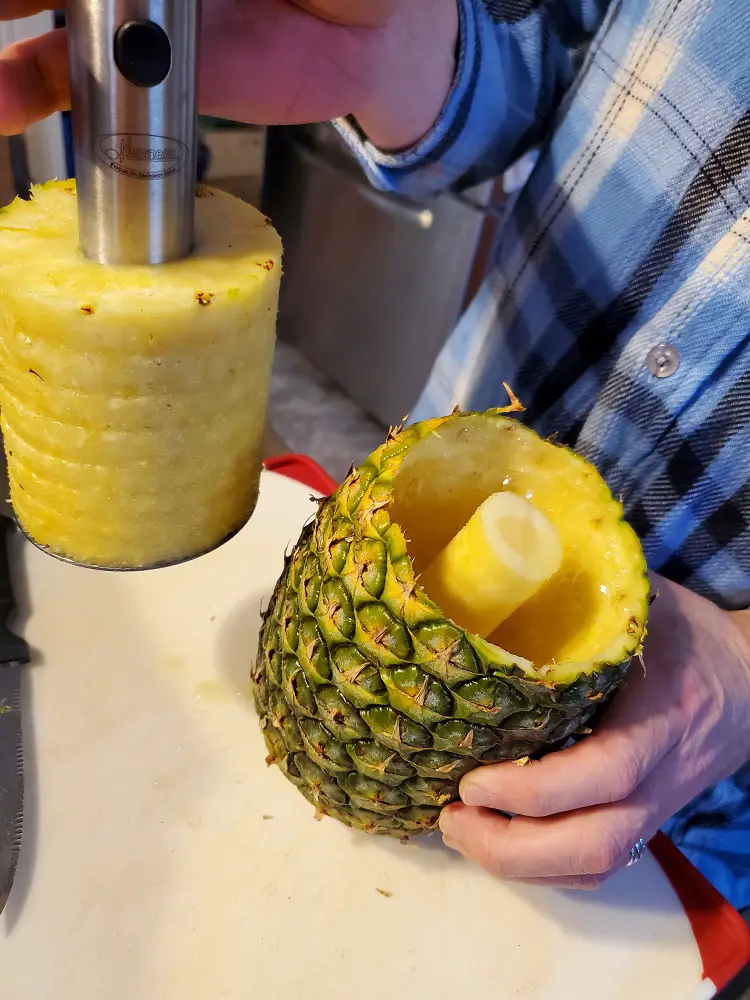
LOVE using this Pineapple corer, check it out on Amazon here.Let’s get back to the people eating the Pineapple part. Did we mention that Pineapple is sweet and tasty? Yes, lots can be made with this wonderful fruit and below is a partial list of popular items that can be made with Pineapple.
| Pineapple chunks for Chocolate Fondue | Ambrosia Salad with Shredded Pineapple | Piña colada drink |
| Hawaiian Pizza (Pineapple and Ham) | Pineapple upside down cake | Pineapple Crisp |
| Pineapple Rum Cake | Roasted Whole Pineapple with Pepper & Rum | Pineapple and Cherry Sponge with Cocunut Rum Custard |
| Golden Pineapple and Vanilla Iced Tea | Pineapple Smoothy | Sweet and Sour Pork |
| Pineapple and Cottage Cheese | Jerk Chicken with Pineapple | Marshmallow and Pineapple dessert. |
| Basked Ham with Pineapple | Baked Spam with Pineapple* | Hawaiian Pizza (Pineapple and Spam) |
*It is interesting to note this pairing of Spam (a canned ham) to Pineapple in some dishes. When the Spam product was introduced to the Hawaiian islands in the 1940s during World War II (originally as part of military C-Rations), it became a staple part of Hawaiian cuisine. So it didn’t take long before Spam and Pineapple were entangled in future recipes together.
Can I Grow Pineapple in My Garden?
You can grow pineapple in your garden, but with conditions. The Grow Monster has been able to grow pineapple in the garden. However, because of our freezing winters here in Virginia, we have not had a pineapple plant last through the winter outside. We also have not been able to grow a new pineapple from it. If anything, it becomes a nice talking point to say you have a pineapple plant growing in the garden. Folks in the far south (e.g., Florida) with warmer climates may have better luck growing pineapple plants all year-around.
Most of us can have the pineapple plant itself grow outside from spring through fall in our garden using the following steps:
Step 1: (In the winter time) Buy a whole pineapple at the store and cut the crown off the pineapple and prepare the rest of the pineapple as you would for any menu item (see pineapple dishes above). Make sure all of the fleshy part of the fruit is removed from the crown
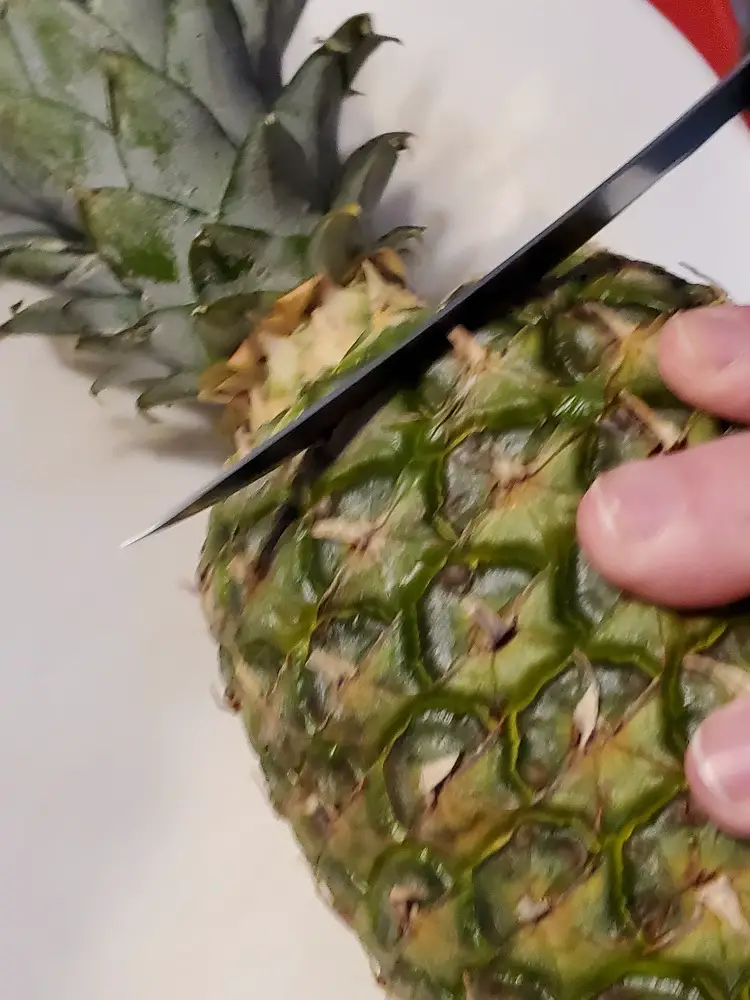
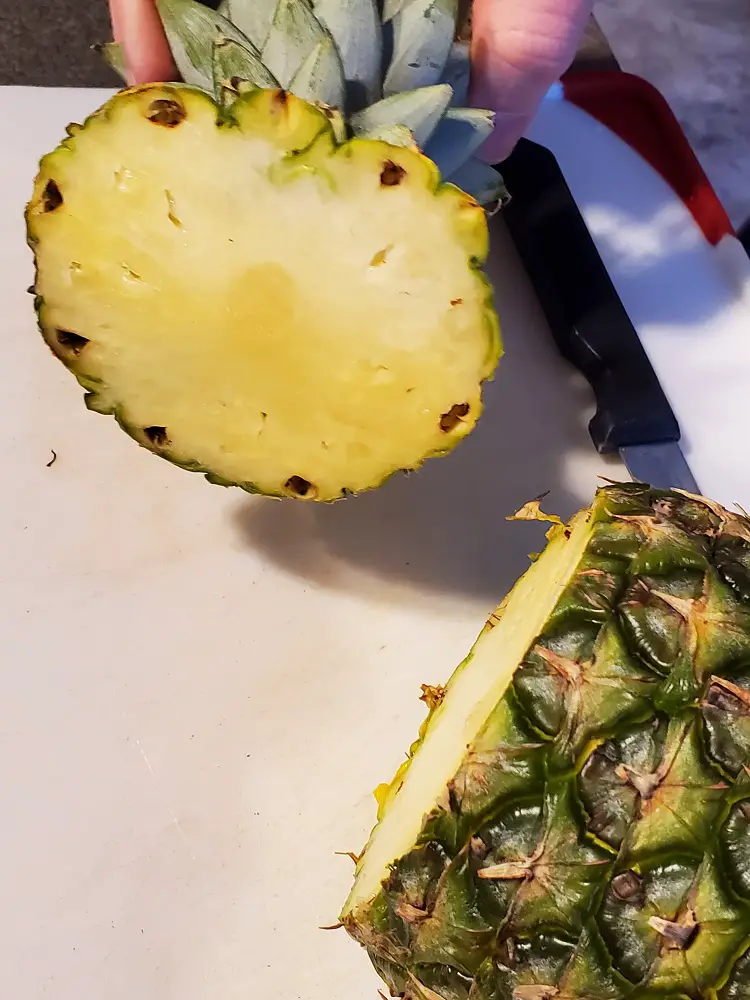
Step 2: Pull any dead leaves from the crown working your way from the outside in.
Step 3: Place the crown in a container of water for a couple months until spring. Ensure that only the fruit side of the crown is submerged. Place the crown with container near a window in the house that gets plenty of sunlight. Change out the water once a week to keep it from clouding up and ensure it is fresh. Pull off any leaves that have died during this time. You may start to see roots as well as new, green leaves forming within the crown.
Step 4: After the danger of frost has passed, you are now ready to transplant your pineapple plant. Find a place in the garden that gets plenty of sun. Prepare a hole, mixing sand and potting soil together. Carefully place the pineapple crown into the hole, gently surrounding it with the sand and potting soil mixture. You want to avoid damaging the fragile root system that has developed. Be sure the water drains well away from the plant and does not pool.
Step 5: Water weekly when soil is dry. They don’t require too much water, so only water when the soil is dry to the touch.
Step 6: Bring the pineapple plant inside before the first frost in the fall if you want a shot of keeping the plant for the next year. Treat it as you would any other houseplant, but ensure it gets plenty of sun on the south side window. Transplant back in the garden the following spring after the danger of frost has passed.
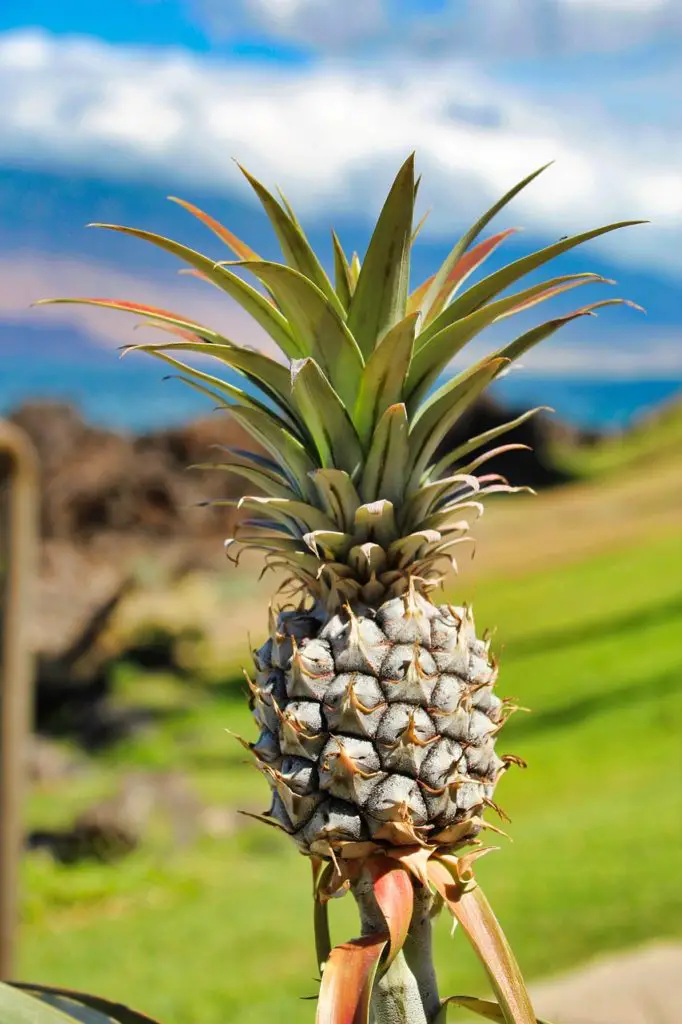
Many plants can be transplanted, check out this post to learn how to transplant a sunflower or this post to learn how to create a pollinator garden. How awesome would a pineapple plant look there?
Final Thoughts
Do Pineapples grow on trees? You, along with The Grow Monster now know that Pineapples do not grow on trees. We’ve come a long way with the Pineapple from being worshipped by the Tupinamba people in South America to being brought back to Europe by Christopher Columbus and turned into a status symbol for those who can afford to have the Pineapple at the time. Now, everyone can enjoy Pineapple!
We’ve also learned that they don’t eat people, but have the bromelain enzyme that is useful in tenderizing meats and antioxidants that can assist with fighting cancer and beneficial to women’s health. There are also many recipes that can be made with the Pineapple fruit, and under the right conditions we can even adorn our suburban gardens with this Pineapple plant. What recipes have you made with Pineapple? Have you tried growing Pineapple, and what was your experience? Please put your response in the comments below. We’d like to hear from you.

